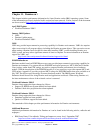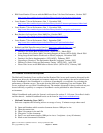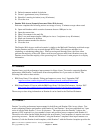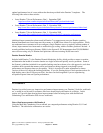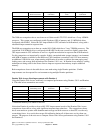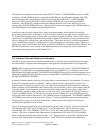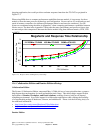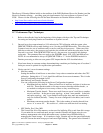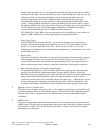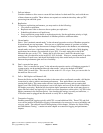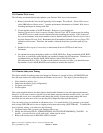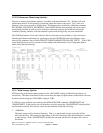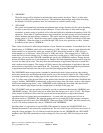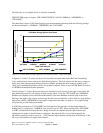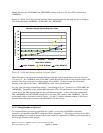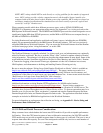that the larger the buffer pool size, the higher the fault rate, but the lower the cpu cost. If the
faulting rate looks high, decrease the buffer pool size. If the faulting rate is low but your cpu
utilization is high, try increasing the buffer pool size. Increasing the buffer pool size
allocates larger objects specifically for Domino buffers, thus increasing storage pool
contention and making less storage available for the paging/faulting of other objects on the
system. To help optimize performance, increase the buffer pool size until it starts to impact
the faulting rate then back it down just a little. Changes to the buffer pool size in the Notes.ini
file will require the server to be restarted before taking effect. In Domino 8.0 and later
releases, the default buffer pool size is 512MB. In earlier releases, if
NFS_Buffer_Pool_Size_MB was not set in the notes.ini file, the buffer pool size could be as
large as 1.5GB. A buffer pool size that large might cause performance issues.
y Server_Pool_Tasks
In the NOTES.INI file starting with 5.0.1, you can set the number of server threads in a
partition. Our tests showed best results when this was set to 1-2% of the number of active
threads. For example, with 3000 active users, the Server_Pool_Tasks was set to 60.
Configuring extra threads will increase the thread management cost, and increase your overall
cpu utilization up to 5%.
y Route at once
In the Server Connection document, you can specify the number of normal-priority messages
that accumulate before the server routes mail. For our large server runs, we set this to 20.
Overall, this decreased the cpu utilization by approximately 10% by allowing the router to
deliver more messages when it makes a connection, rather than 1 message per connection.
y Hub-and-spoke topology versus peer-to-peer topology.
We attempted the large server runs with both a peer-to-peer topology and a hub-and-spoke
topology (see the Domino Administrators guide for more details on how to set this up).
While the peer-to-peer funtioned well for up to 60,000 users, the hub-and-spoke topology had
better performance beyond 60,000 users due to the reduced number of server to server
connections (on the order of 50 versus 600) and the associated costs. A hub topology is also
easier to manage, and is sometimes necessitated by the LAN or WAN configuration. Also,
according to the Domino Administrators guide, the hub-and-spoke topology is more stable.
5. Dedicate servers to a specific task
This allows you to separate out groups of users. For example, you may want your mail delivered
at a different priority than you want database accesses. This will reduce the contention between
different types of users. Separate servers for different tasks are also recommended for high
availability.
6. MIME format.
For users accessing mail from both the Internet and Notes, store the messages in both Notes and
MIME format. This offers the best performance during mail retrieval because a format conversion
is not necessary. NOTE: This will take up extra disk space, so there is a trade-off of increased
performance over disk space.
IBM i 6.1 Performance Capabilities Reference - January/April/October 2008
© Copyright IBM Corp. 2008 Chapter 11 - Domino 165



